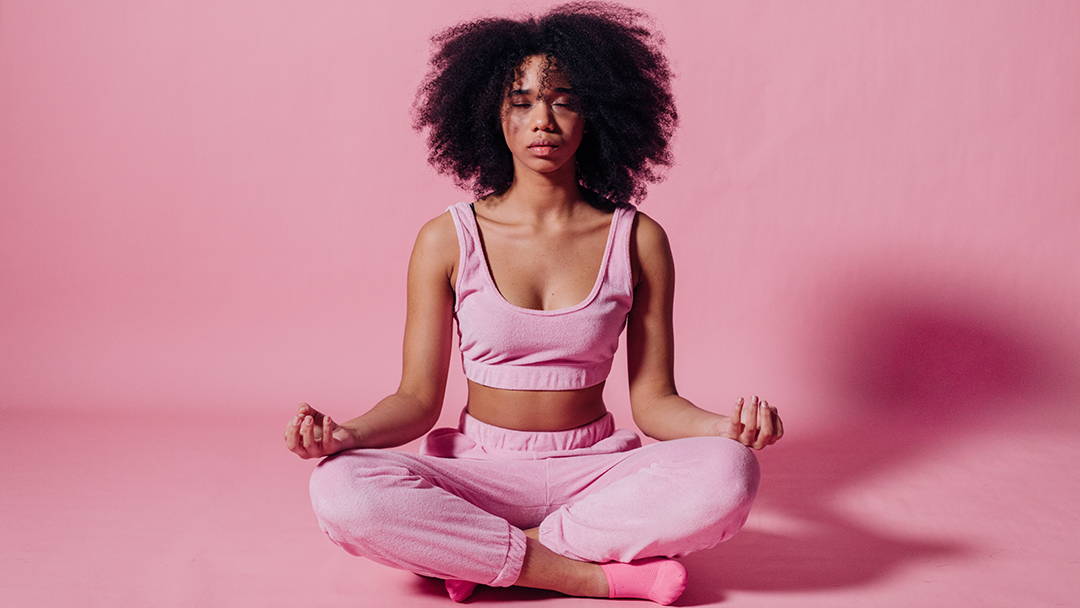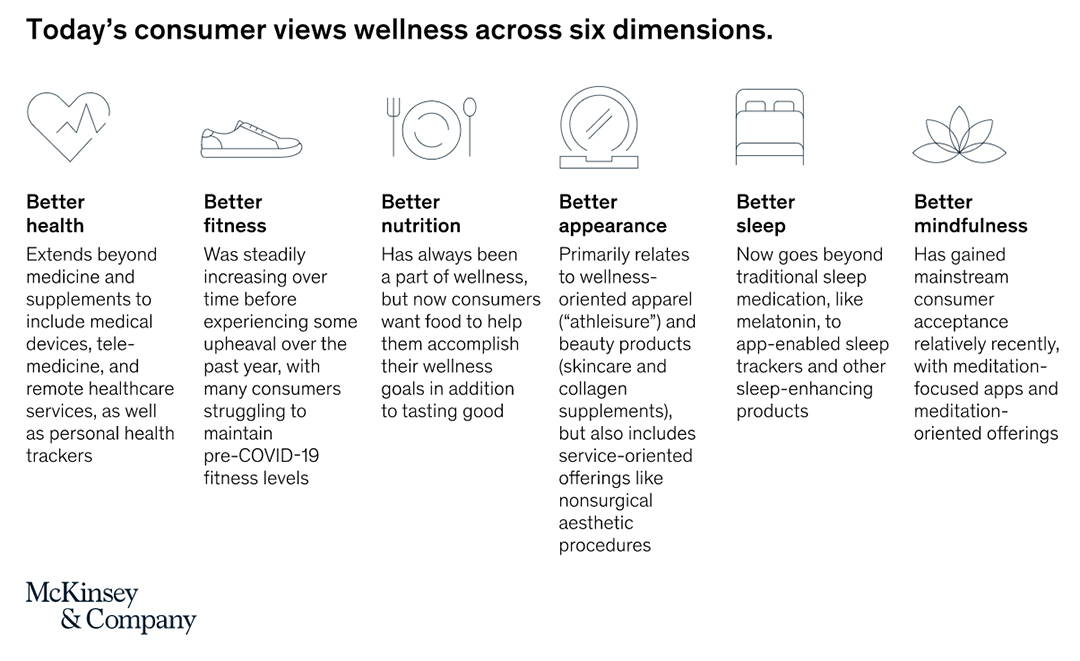
The Boom of the Global Wellness Industry
And the Trends that are Making it Big
By Renee Fortune
In 2015, the global wellness industry was worth $1 trillion. Today, according to McKinsey & Company, it is worth $1.5 trillion. Long gone are the days when eating 5 fruits and vegetables per day was good enough to set you up for life in the contemporary world. We live in an age where global stress levels have reached unprecedented heights, environmental strain is putting pressure on our minds and bodies, and we’re learning that the things we believed about health just a few years ago, are completely wrong. The wellness industry has made a few very significant shifts to cater for our changing and growing needs, to the tune of almost $2 trillion.
How do we define wellness? McKinsey & Company provided a compelling argument by surveying 7500 consumers across six countries. What they found is that “wellness” is defined by six major categories, namely: better health, better fitness, better nutrition, better appearance, better sleep and better mindfulness.
We took a look at trends in these 6 categories to paint a picture of the future of global wellness.
Better Health: It Starts in the Gut
The world is waking up to the undeniable connection between your gut and your brain. According to Harvard Medical School:
“The brain has a direct effect on the stomach and intestines. For example, the very thought of eating can release the stomach's juices before food gets there. This connection goes both ways. A troubled intestine can send signals to the brain, just as a troubled brain can send signals to the gut. Therefore, a person's stomach or intestinal distress can be the cause or the product of anxiety, stress, or depression. That's because the brain and the gastrointestinal (GI) system are intimately connected.”
With the onset of COVID-19, doctors have also been advocating for better gut health because of its strong link to the immune system. So very simply, when it comes to health in the information age, we’re all about maintaining a healthy gut. Probiotic-infused beverages like kombucha are super trendy right now, as well as fermented foods like plain yoghurt and cheese. We’re also opting for standard probiotic-rich foods like kimchi and sauerkraut.
Better Fitness: Outdoors/Indoors
A recent study showed that over 70% of participants believed that the best ways of staying fit were training in the outdoors or doing home workouts. Training in conventional gyms is simply not a vibe anymore. We’re embracing nature again and going for runs in the park and ice-cold dips in the ocean first-thing in the morning. We’re hiking, we’re trail-running and we’re remembering why nature makes us feel so good. On the other hand, we’re also trying online, home workouts in our own time, in our space and at our own pace. The most popular classes range from yoga and dancing to weight-training and even high-intensity training that involves household items.
Better nutrition: Fasting is More than a Fad
It seems that the world started off believing that eating three meals a day with adequate fruit and veg, was the pinnacle of good health. Then dieticians had us trying the 6-meals-a-day way of eating where we consumed smaller portions more regularly, with snacking in between. Now, we’re looking to intermittent fasting as a way of staying fit, cleansing the body and losing excess weight. The benefits of intermittent fasting are vast, and include increased metabolic rate, reduced inflammation and better heart health.
Better appearance: Mask On, Mask Off
Access to dermatologists and spas were limited during the early stages of the pandemic, so many individuals turned to at-home skincare solutions like last year’s popular trend, the sheet mask. It seems that regular, at-home masking can help reduce the negative effects of “maskne,” or the acne that develops on your chin and lip area due to wearing a mask. We’re also looking for easier, more accessible and more cost-effective ways of recreating the spa experience in the comfort of our own homes.
Better sleep: Siesta Anyone?
As Euromonitor International explains in a recent study, we live in an age where we are constantly bombarded by information on illuminated screens and through social media, online messaging and email. It’s easy to become overwhelmed and just as easy to struggle to get to sleep. With digital technology, we can now track our sleep duration and sleep quality, and we’re using these apps to help us optimise our shut eye. We’re also investing in vitamins and supplements that help us sleep, drinking night-time teas like lavender and chamomile, doing meditation sessions before bed, doing yoga nidra or using sleep-aid apps.
Better mindfulness: Breathe on, Breathe Out
For a few years now, the wellness industry has catalysed a global culture where mindfulness is at the top of our list of priorities. And there are a number of ways to achieve a more relaxed, conscious frame of mind and to maintain that state throughout the day. We’re turning to meditation and story-telling apps as ways to take a break from the hustle and bustle of everyday life. We’re even listening to ASMR sessions on Youtube to get to sleep easier or to foster a sense of peace and calm. We’re watching TED Talks to become more motivated and educated. We’re doing meditation and taking conscious walks on the beach. The world is doing everything it can to escape the mania of the mind and focus on the perfection of the moment.











